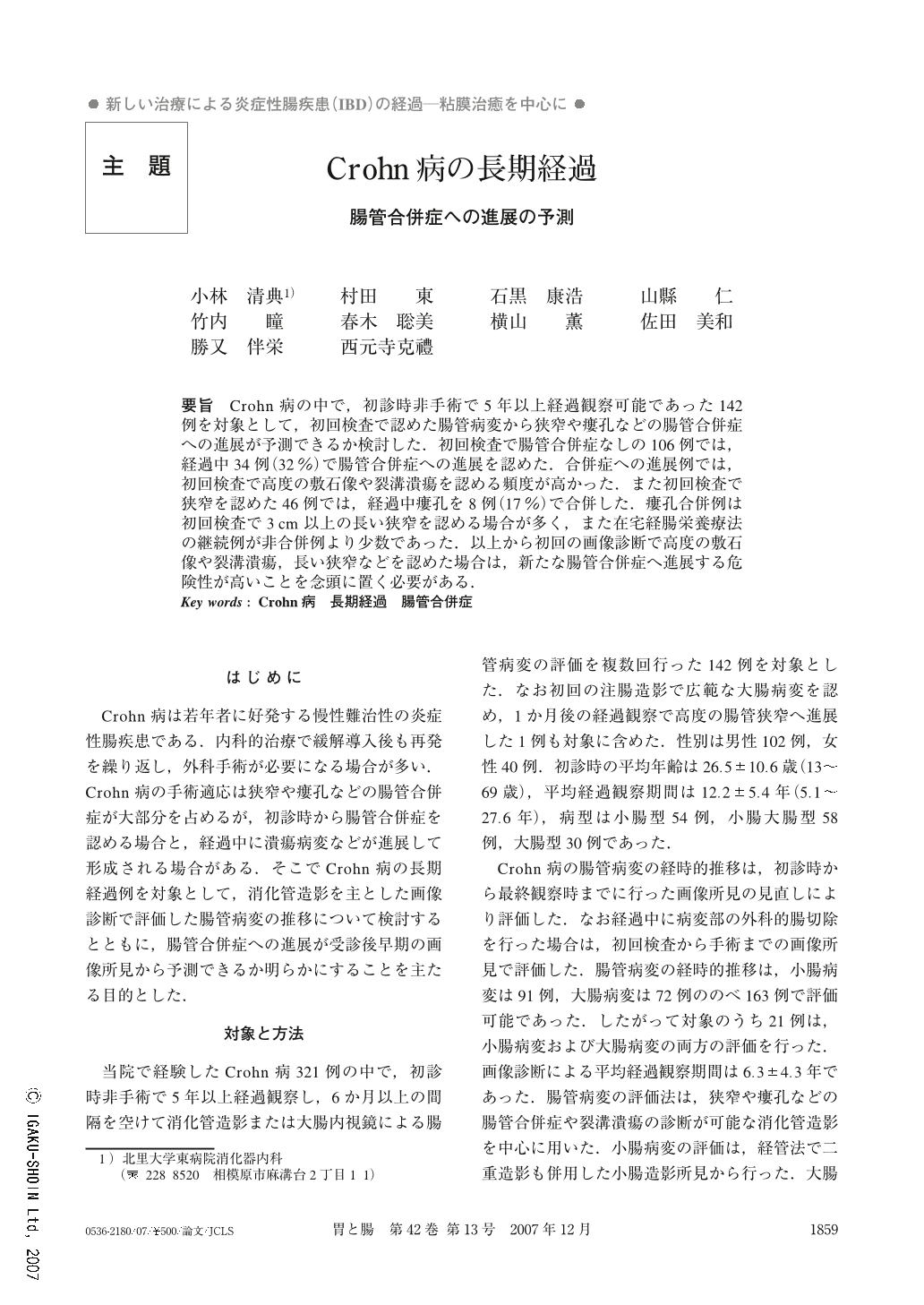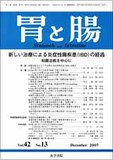Japanese
English
- 有料閲覧
- Abstract 文献概要
- 1ページ目 Look Inside
- 参考文献 Reference
要旨 Crohn病の中で,初診時非手術で5年以上経過観察可能であった142例を対象として,初回検査で認めた腸管病変から狭窄や瘻孔などの腸管合併症への進展が予測できるか検討した.初回検査で腸管合併症なしの106例では,経過中34例(32%)で腸管合併症への進展を認めた.合併症への進展例では,初回検査で高度の敷石像や裂溝潰瘍を認める頻度が高かった.また初回検査で狭窄を認めた46例では,経過中瘻孔を8例(17%)で合併した.瘻孔合併例は初回検査で3cm以上の長い狭窄を認める場合が多く,また在宅経腸栄養療法の継続例が非合併例より少数であった.以上から初回の画像診断で高度の敷石像や裂溝潰瘍,長い狭窄などを認めた場合は,新たな腸管合併症へ進展する危険性が高いことを念頭に置く必要がある.
We examined whether progression to intestinal complications such as strictures and fistulas can be predicted on the basis of radiographic and endoscopic findings of the intestine diagnosed at first examination in 142 patients with Crohn's disease who were followed-up for 5 years or longer without undergoing surgery. Among 106 patients with no intestinal complications at first examination, 34 (32%) had progression to intestinal complications during follow-up. The development of complications was frequently associated with a marked cobblestone-appearance and fissuring ulcers at first examination. Among 46 patients who had intestinal strictures at first examination, 8 (17%) had progression to fistula during follow-up. In patients with fistula, a long stricture extending for at least 3 cm was frequently seen at first examination, and continued home enteral nutrition was less common than in patients without fistula. In conclusion, physicians should bear in mind that patients who have a marked cobblestone-appearance, fissured ulcers, or a long intestinal stricture on endoscopic and radiographic findings at first examination are at high risk for progression to other intestinal complications.

Copyright © 2007, Igaku-Shoin Ltd. All rights reserved.


